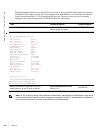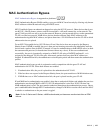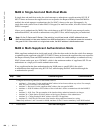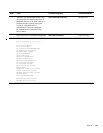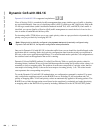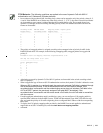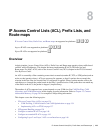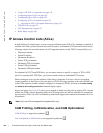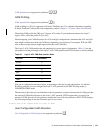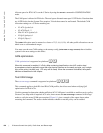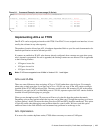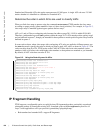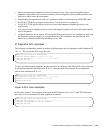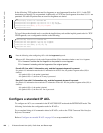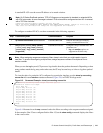
134 | IP Access Control Lists (ACL), Prefix Lists, and Route-maps
www.dell.com | support.dell.com
• Assign an IP ACL to an Interface on page 147
• Configuring Ingress ACLs on page 149
• Configuring Egress ACLs on page 149
• Configuring ACLs to Loopback on page 151
• Applying an ACL on Loopback Interfaces on page 151
• IP Prefix Lists on page 153
• ACL Resequencing on page 157
• Route Maps on page 160
IP Access Control Lists (ACLs)
In the Dell Force10 switch/routers, you can create two different types of IP ACLs: standard or extended. A
standard ACL filters packets based on the source IP packet. An extended ACL filters traffic based on the
following criteria (for more information on ACL supported options see the FTOS Command Reference):
• IP protocol number
• Source IP address
• Destination IP address
• Source TCP port number
• Destination TCP port number
• Source UDP port number
• Destination UDP port number
For extended ACL TCP and UDP filters, you can match criteria on specific or ranges of TCP or UDP
ports. For extended ACL TCP filters, you can also match criteria on established TCP sessions.
When creating an access list, the sequence of the filters is important. You have a choice of assigning
sequence numbers to the filters as you enter them, or FTOS will assign numbers in the order the filters are
created. The sequence numbers, whether configured or assigned by FTOS, are listed in the
show config
and
show ip accounting access-list command display output.
Ingress and egress Hot Lock ACLs allow you to append or delete new rules into an existing ACL (already
written into CAM) without disrupting traffic flow. Existing entries in CAM are shuffled to accommodate
the new entries. Hot Lock ACLs are enabled by default and support both standard and extended ACLs on
all platforms.
CAM Profiling, CAM Allocation, and CAM Optimization
CAM Profiling is supported on platform e
User Configurable CAM Allocations are supported on platform c
Note: Hot Lock ACLs are supported on Ingress ACLs only.



